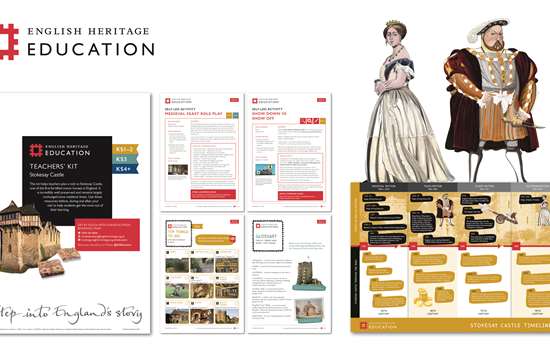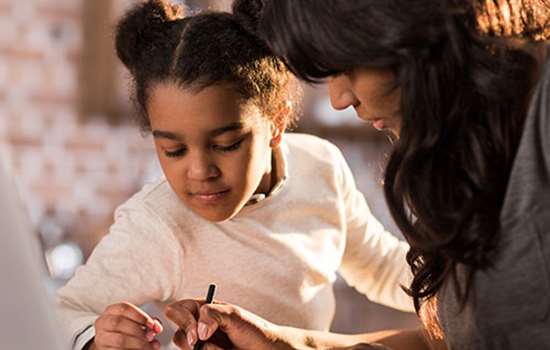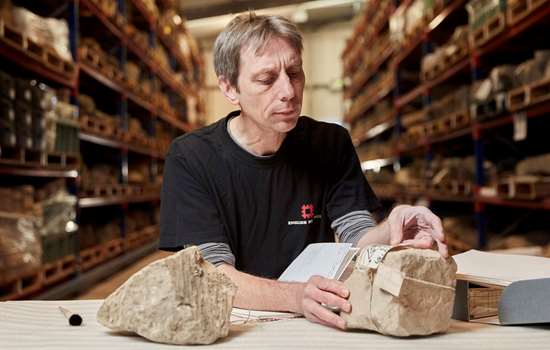- Link the chunks – For ease of study, it's helpful to break things down into manageable chunks but by doing so the links between them can be lost. Take time to re-map things once the basic knowledge has been acquired to strengthen students’ understanding of the bigger picture.
- Challenge presumptions of inevitability – It can be all too easy to view the past as a series of events happening in a predictable (and often seemingly progressive) way. Exploring connections is a good thing, but pursuing a linear narrative can lead to ‘blind spots’ in your interpretation. Keep an open mind and try not to completely predict the ending before you get there!
- Embrace a range of sources – The range of source material from earlier periods can be limited, especially when trying to explore underrepresented voices of the past. The breadth of sources available should be greater for the 20th century so try to be as representative as possible. Encourage your students to talk to their relatives, explore their local records office, investigate the history of their homes and visit historic sites. Make clear that history isn’t just something you read about in books but can be visible, actively explored and often lies within the lived experience of someone they know.
Suggested Reading and Activities
-

Eltham Palace Teachers' Resource Pack (KS1-KS3)
Discover how a crumbling medieval palace was transformed into an Art Deco masterpiece in the 1930s and investigate primary sources to understand how life at Eltham changed over the centuries.
-

Percy's View (KS1-KS2) - Richmond Castle Cell Block Learning Pack
Explore conscientious objection from different viewpoints in this activity where you'll uncover what conscientious objection was and how it was viewed during the First World War.
-

Range, Routes and Radar (KS3) -Pendennis and St Mawes Castle Teachers' Kit
Discover how enemy ships were targeted from the Battery Observation Post (BOP) at Pendennis Castle through this activity focusing on understanding the role of radar.
-

Write a Military Report (KS3-KS4+) - Dover Castle Teachers' Kit
Apply your understanding of wartime activity at Dover Castle during the First World War by writing an accurate military report.
-

Design your own Graffiti (KS2-KS3) - Richmond Castle Cell Block Learning Pack
Imagine that you're a wartime prisoner at Richmond Castle and create your own graffiti designs inspired by examples from its cell block.
-
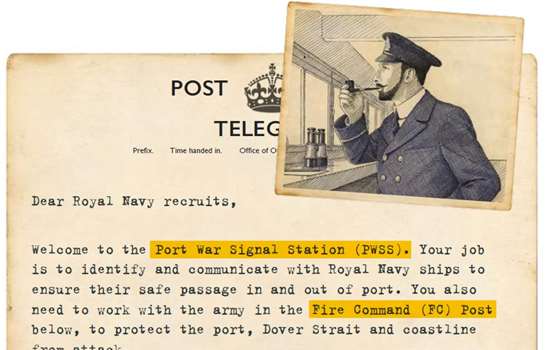
Dover Castle First World War Team Training Assignment (KS3-KS4)
Take on the role of a Royal Navy recruit and complete a team training assignment based on the work of the Royal Navy at Dover Castle during the First World War.
-

Secret Wartime Tunnels Timeline (KS1-KS4+) - Dover Castle Teachers' Kit
Use our timeline to understand how the Secret Wartime Tunnels at Dover Castle developed in response to Britain's involvement in different conflicts.
-

The Great Debate (KS3-KS4) - Richmond Castle Cell Block Learning Pack
Take on opposing sides of the debate on conscientious objection to better understand why people supported and apposed the practice during the First World War.
History At Home Live! Dover Castle and the Dunkirk Evacuation
Watch History At Home Live! with Ben Shires and our expert Paul Pattison to find out more about the role the Secret Wartime Tunnels at Dover Castle played in the Second World War.
Get to Grips with the Period
Both World Wars had a major impact on daily life, technology and society.
A number of English Heritage sites were altered and used in new ways during this period in response to the demands of war. Old fortresses like Pendennis Castle were updated for new kinds of warfare. Private houses such as Wrest Park were converted into hospitals and convalescence homes, while the Courtaulds transformed their cellar at Eltham Palace into an air raid shelter for themselves and their guests. The Secret Wartime Tunnels beneath Dover Castle played a major role in saving the nation in 1940, acting as the command post for Operation Dynamo.
The casualties of both wars are remembered by the London war memorials cared for by English Heritage. York Cold War Bunker is a reminder that the threat of even greater destruction remained ever-present in the second half of the century.
Read our Introduction to 20th-century England-
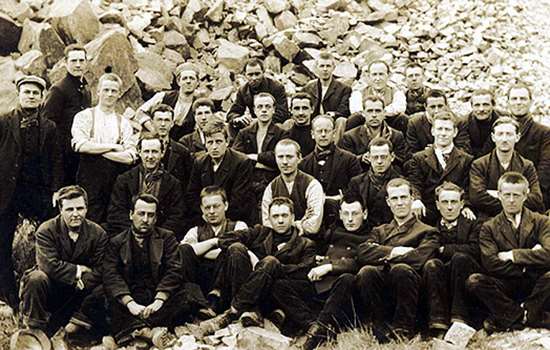
The Richmond Sixteen
How 16 First World War conscientious objectors detained at Richmond Castle were taken to France and sentenced to death for refusing to obey orders.
-

Fortress Dover and the First World War
Use our virtual tour to explore a building at Dover Castle that played a vital role in safeguarding Dover as a garrison and naval base in the First World War.
-
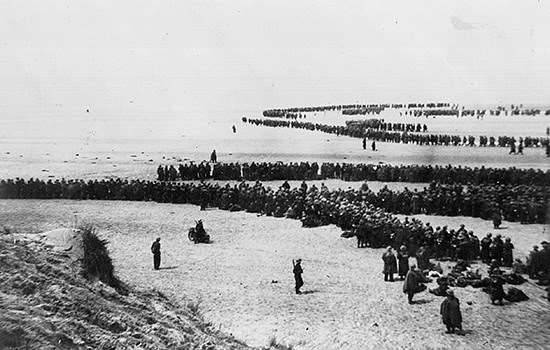
Operation Dynamo: The Dunkirk Evacuation
The mission to evacuate Dunkirk in May 1940 was directed from Dover Castle’s secret wartime tunnels. Find out the key facts about Operation Dynamo.
-

The decline of the country house
How the precarious survival of Brodsworth’s Victorian interiors reflects the determination of its final owners to preserve a way of life that became almost impossible in the 20th century.
20th Century Glossary
Expert Advice
We asked one of our historians for their thoughts on what to consider when teaching the 20th century:
The 20th century witnessed unprecedented change and cataclysmic events including the First (1914–18) and Second World Wars (1939–45). It saw the break-up of European colonial empires and the clash of ideologies represented by the Soviet Union and the United States, with the ascendency of the latter, while China emerged as a rival power.
The century produced rapid technological change: the internal combustion engine, aircraft, radio, television, and computers resulted in an intricately connected world. This connectivity fostered social and economic change, globalisation, multiculturalism, urbanisation, consumerism and huge benefits in living standards for many, and in better health and effective medicines in vaccines and antibiotics. Massive population growth caused increasing competition and depletion of resources, which contributed to global warming and the degradation of ecosystems, including increasing species extinctions.
Paul Pattison, Senior Historian
Video Resources
Immerse youself in the 20th century with our variety of themed videos.
Meet Admiral Ramsay, commander of Operation Dynamo at Dover Castle and find out more about 1930s fashion in the chic interiors of Eltham Palace. Take a tour of the Cell Block at Richmond Castle, uncovering conscientious objector graffiti, and discover York Cold War Bunker
-
1930s Fashion at Eltham Palace
-
Inside the Cell Block at Richmond Castle 360 Tour
-
Discover York Cold War Bunker

